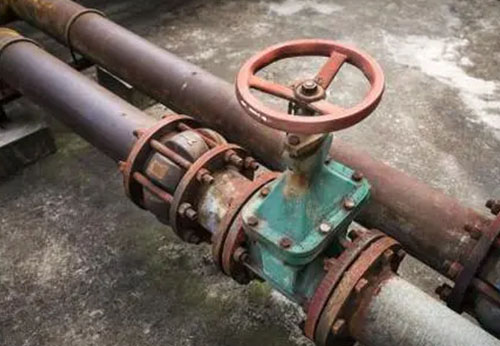What are the valves used in hydropower stations?
Posted by Bundor valve
There are many types of valves in hydropower stations, and each valve has its specific functions and application scenarios. The following are some common types of valves in hydropower stations and their functions:

1. Butterfly valve
Butterfly valve is a valve with simple structure, light weight and easy operation. It is widely used in turbine water inlet, cooling water system, drainage system, etc. of hydropower stations. The butterfly valve controls the flow of fluid by rotating the disc, and has the advantages of small flow resistance, fast opening and closing speed, and good sealing performance.
2. Gate valve
The gate valve is a valve that controls the flow of fluid by lifting the gate plate. It is characterized by small flow resistance when fully open, and is suitable for occasions requiring high flow and low resistance. The gate valve in hydropower stations is often used in turbine water inlet, main water supply pipeline, drainage pipeline, etc. The gate valve has good sealing performance and is suitable for medium and high pressure systems.
3. Ball valve
The ball valve controls the flow of fluid by rotating the sphere, and has the advantages of simple structure, small operating torque, and good sealing performance. Ball valves are widely used in various systems of hydropower stations, such as cooling water system, lubricating oil system, fire protection system, etc. The full-bore design of the ball valve makes it perform well in situations where large flow and low resistance are required.
4. Check valve
The check valve is used to prevent fluid backflow and protect the turbine and pipeline system from backflow impact. Check valves in hydropower stations are usually installed at turbine outlets, penstocks, drainage pipes, etc. The check valve has a simple structure, but it is crucial in preventing water hammer and protecting equipment.
5. Regulating valve
The regulating valve is used to accurately control the flow, pressure and temperature of the fluid, and is usually used in systems that require fine adjustment. Regulating valves in hydropower stations are often used in cooling water systems, lubricating oil systems, penstocks, etc. The sensitivity and accuracy of the regulating valve are crucial to the stable operation of the system.
There are many types of valves in hydropower stations, each of which has its specific functions and application scenarios. Choosing the right valve type and performance parameters is crucial to the stable operation of the hydropower station.

1. Butterfly valve
Butterfly valve is a valve with simple structure, light weight and easy operation. It is widely used in turbine water inlet, cooling water system, drainage system, etc. of hydropower stations. The butterfly valve controls the flow of fluid by rotating the disc, and has the advantages of small flow resistance, fast opening and closing speed, and good sealing performance.
2. Gate valve
The gate valve is a valve that controls the flow of fluid by lifting the gate plate. It is characterized by small flow resistance when fully open, and is suitable for occasions requiring high flow and low resistance. The gate valve in hydropower stations is often used in turbine water inlet, main water supply pipeline, drainage pipeline, etc. The gate valve has good sealing performance and is suitable for medium and high pressure systems.
3. Ball valve
The ball valve controls the flow of fluid by rotating the sphere, and has the advantages of simple structure, small operating torque, and good sealing performance. Ball valves are widely used in various systems of hydropower stations, such as cooling water system, lubricating oil system, fire protection system, etc. The full-bore design of the ball valve makes it perform well in situations where large flow and low resistance are required.
4. Check valve
The check valve is used to prevent fluid backflow and protect the turbine and pipeline system from backflow impact. Check valves in hydropower stations are usually installed at turbine outlets, penstocks, drainage pipes, etc. The check valve has a simple structure, but it is crucial in preventing water hammer and protecting equipment.
5. Regulating valve
The regulating valve is used to accurately control the flow, pressure and temperature of the fluid, and is usually used in systems that require fine adjustment. Regulating valves in hydropower stations are often used in cooling water systems, lubricating oil systems, penstocks, etc. The sensitivity and accuracy of the regulating valve are crucial to the stable operation of the system.
There are many types of valves in hydropower stations, each of which has its specific functions and application scenarios. Choosing the right valve type and performance parameters is crucial to the stable operation of the hydropower station.
 简体中文
简体中文 Русский
Русский Español
Español Bundor - Butterfly, Gate, Check, Ball, Globe Valve Manufacturer, Supplier & Distributor
Bundor - Butterfly, Gate, Check, Ball, Globe Valve Manufacturer, Supplier & Distributor
